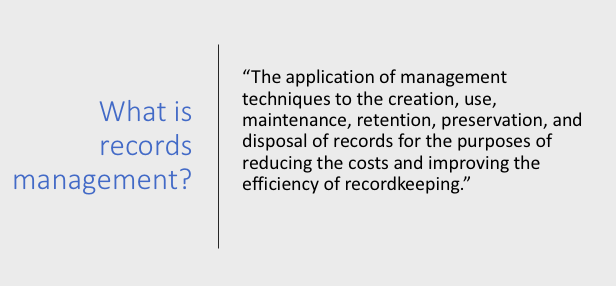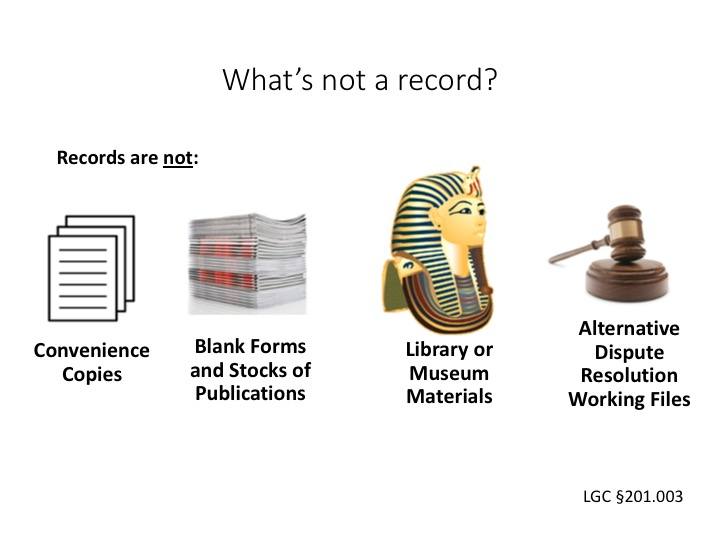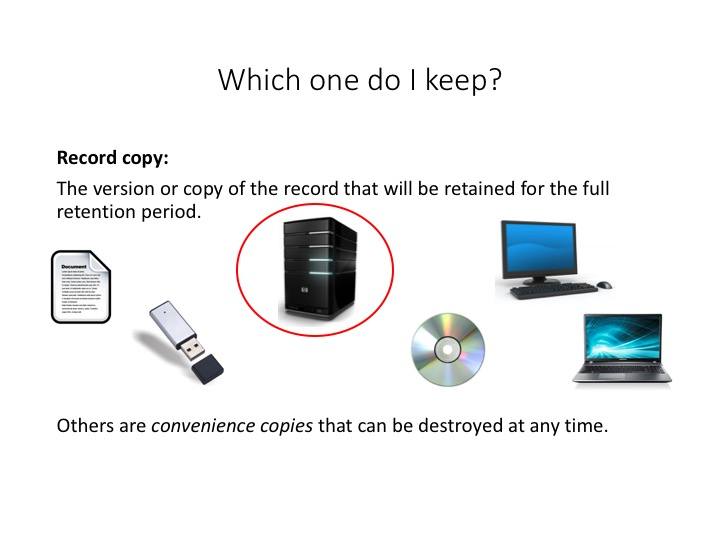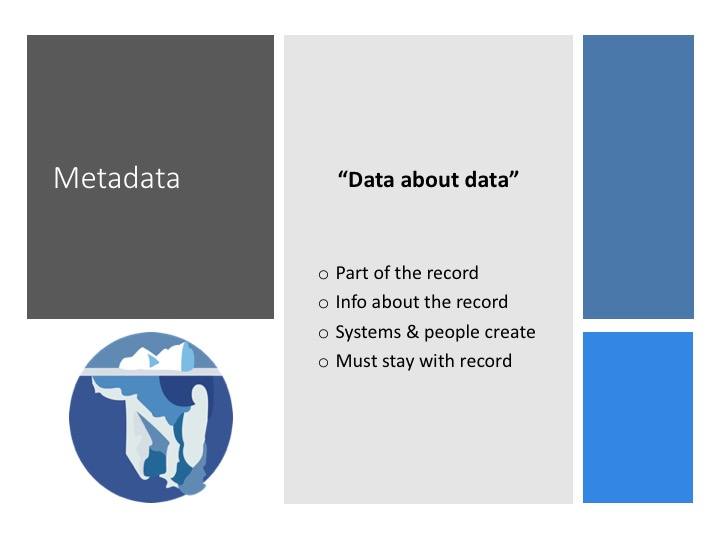The task of record management is not for the faint of heart. You must know the law, determine the procedures, organize the process, and train the users in all of the above. Since most school district’s records are digital, the chief technology officer has an important part to play in this process. As a service to our members, we recently hosted a webinar in which Joshua Clark of the Texas State Library and Archives Commission, provided an overview of the rules that govern the management of school records, including those that are electronic. This blog post is a short recap of what he covered in the webinar.
The Basics
Let’s first define what we mean when we refer to records management. Below is the legal definition for the state of Texas.

We know it’s important to manage a district’s records because it is the law, but there are other important reasons to do so. Having a records management plan helps you efficiently find records when they are needed, either for legal purposes or to carry out the business of the district. In addition, it helps you control costs by destroying copies you are not required to retain.
Next, we need to establish the definition of a record. According to the TSLAC , a state record is
any written, photographic, machine-readable, or other recorded information created or received by or on behalf of a state agency or an elected state official that documents activities in the conduct of the state business or use of public resources.
It might be helpful to also consider what is NOT a record.

Determining Records to Retain
Since there are often multiple copies of a record, the question becomes which record do you keep. Joshua pointed out that the one copy you keep is identified as the record copy. All other copies are considered convenience copies and can be destroyed at any time. It is the district’s responsibility to determine which copy is the record copy and in what media format the record should be stored.

Records Management Officer
Now that we know what a record is, whose responsibility is it to maintain them? Each district is required to appoint someone to be the Records Management Officer. The district’s school board makes this designation. The RMO has the responsibility to oversee the entire process. This includes the establishment of the policies and procedures and includes a retention schedule. The RMO is also responsible for determining the method of storing the records and how they will be retrieved. They must also determine the most economical method for the storage of the files that are inactive.
Records Retention Schedule
Under the RMO’s guidance, a school must create or adopt a records retention schedule. Your district can create their own retention schedule, adopt TSLAC’s schedules, or do a mixture of both. Most districts adopt TSLAC’s schedules.
A school district’s record is grouped with records that are similar. These are called a record series. Each record in a series is required to be kept for the same length of time. It doesn’t matter if the record is contained on paper or if it is a digital record. The record series determines the length of time it’s to be retained.

A retention schedule is not hard to read if you know what to look for.

How Long?
Once you identify the record series and the retention schedule for that record series, you are able to determine how long you must keep the record.

While we are reviewing the length of time each record series is to be kept, it is important to note the exceptions that prevent you from destroying a record, even if it meets the threshold upon which it can be destroyed.

Managing Electronic Records
I often hear someone ask, “How long must I keep a teacher’s email?” It depends. The content of a record is what determines the length it must be retained, not the format of the record.
However, electronic records do pose some problems that a district must consider when storing their records electronically. The RMO needs to determine if the record will be available and readable. For example, if the record is on a floppy drive, but you don’t have a device that can read the floppy drive, the record isn’t available. You must have both the necessary hardware and software that’s needed to access the content of the record. This will be an ongoing issue as storage solutions evolve and change due to technological advances.
Metadata
One thing I learned from the webinar is that the metadata of a file is considered part of the government record. Metadata is data about the data. For example, metadata will tell you who created the record and who has changed it. It also might provide information about the location of its creation and the time and date the record was created.

Types of Electronic Records
Email is considered a record if its contents contains government business. The contents of the email determines how long you are required to retain the record. It is important to note that the content of the email, not the device it was created on, determines if it needs to be kept. If the email pertains to school district business, then it is a record that must be managed and retained according to the retention schedule, even if it was created on an employee’s personal device.
Text Messages
Courts have ruled that text messages are also considered a record if it conducts government business. Check out the TSLAC’s blog on ways to capture text messages that need to be retained and other issues related to email.
Social Media
Social media can also create government records. TSLAC recommends that your district create policies and procedures that outline who can post and what they are allowed to post. You have to decide if what is posted is a convenience copy or the official record copy. You also must decide if you are going to allow the public to post on the district’s social media accounts. If so, you will need to create policies regarding this and post these policies on the different district social media platforms. You might want to review the TSLAC’s blog for articles dealing with social media.
Training Available
If you are interested in more training, checkout their website. They have multiple webinars that you and your staff can watch to ensure that your district is in compliance with the law.
Source: Most of this content, including the graphics, were obtained from the Texas State Library and Archives Commission.
Photo of Computers by Gerd Altman, accessed on Pixabay. Creative Commons License: Free for Commercial Use and No Attribution Required.


